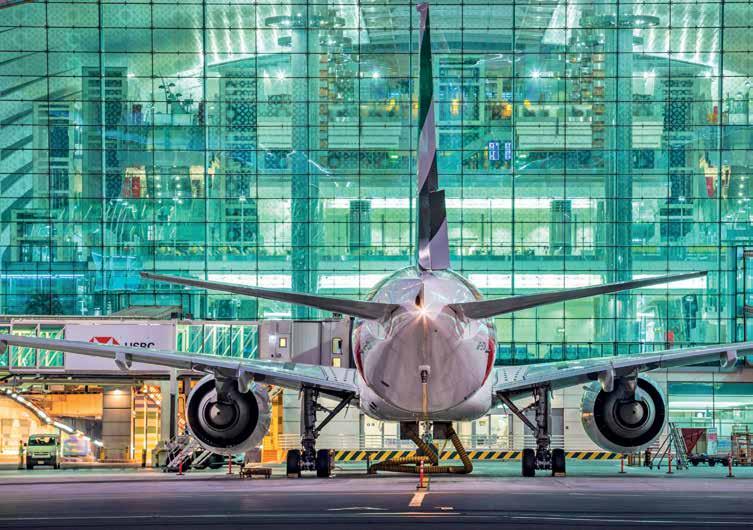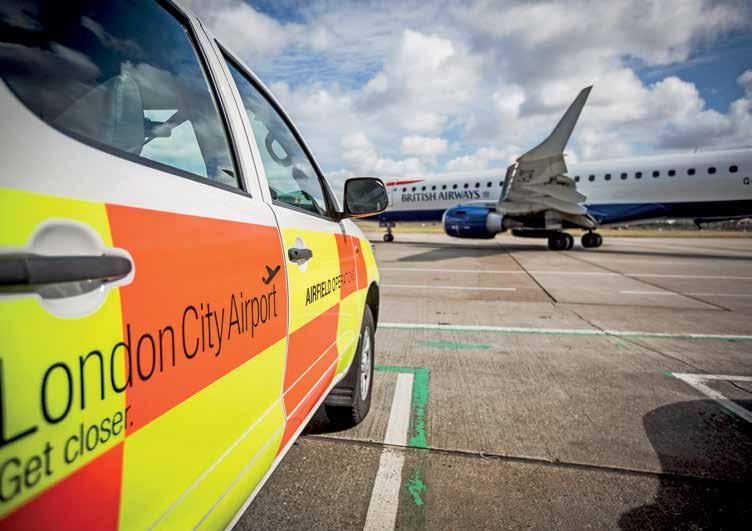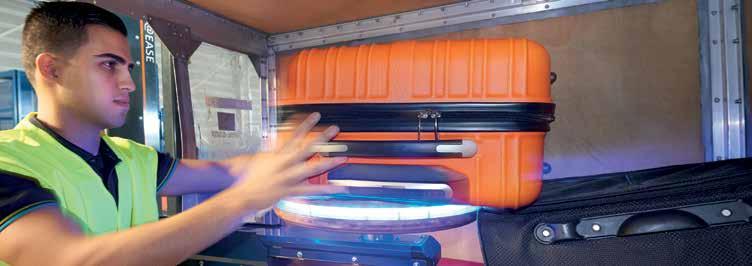
7 minute read
Is aviation attractive enough?
The aviation industry is facing a significant new capacity challenge, and it's not due to infrastructure or system restrictions as previously, but due to the availability of workforce.
According to the latest ACI World forecasts, passenger traffic is expected to reach 19.3 billion passengers by 2041. The availability of a strong and diverse workforce to cater to and accommodate this future demand is critical for the industry.
Advertisement
The significant restrictions experienced on resource availability can have negative impacts on service quality, operational performance, and the aviation system’s capacity to meet expected growth profiles. These constraints can equate to economic losses for industry and local economies.
In addition to the ongoing resource and skills gap, the industry is equally grappling with issues related to diversity, equity, and inclusion (DEI). Women and minority groups remain underrepresented in many aviation fields; this lack of diversity can have negative consequences on the industry’s global performance and growth and limit its potential to provide positive and lasting socioeconomic benefits.
Staff and skills shortages are impacting the operations and performance of many industries on a global scale, including airports and the wider aviation ecosystem.
According to the Air Transport Action Group (ATAG), the aviation workforce contracted by 43%, equating to 4.8 million jobs globally, during the pandemic. New employees are difficult to find, as the priorities of many people have changed and competition to attract talent is fierce.
This is happening at a time when traffic is steadily progressing, potentially creating a widening gap that can cause important operational challenges, particularly during peak travel periods.
The industry needs to adopt a strategic and novel approach to workforce planning and development focusing on both short-term and long-term solutions. This includes investing time and energy into ensuring that aviation is an employment option of choice, developing training and education programmes, promoting DEI, fostering a positive work environment, and providing competitive compensation and benefits among the industry and its stakeholders.
By addressing the current challenges proactively and creating better awareness for potential aviation workers, the industry can build a workforce that is prepared to meet the expected future demand and continue to be driven by innovation and growth.
The strong and diverse aviation workforce
The aviation industry is a complex ecosystem, consisting of multiple players and processes, that requires the availability of a large and well-trained workforce. With 11.3 million jobs directly linked to the aviation sector, the workforce plays a crucial role in ensuring the safe and efficient operations across the entire aviation industry.
A large portion of these jobs, around 60%, take place at airports where a multitude of roles are needed to keep delivering the range of services required to make the aviation system function on a day-to-day basis across all regions of the world.
The instability of employment in aviation during the pandemic, generated by unpredictable traffic patterns due to the wide variety of health measures and travel restrictions implemented by States had a significant impact on aviation’s attractiveness as an employer.
In addition, the ongoing debate around the environmental sustainability of the aviation system has further impacted aviation as an optimal career path, particularly for the next generation of professionals. However, the wider changes and challenges are prompting the industry to rethink its employer brand, as its international and fast paced nature, and commitment to fight climate change, are features that can be highlighted to attract job seekers.
To ensure that the aviation workforce remains sustainable and appealing, industry stakeholders must prioritise investing in creating an attractive and positive work environment. Promoting actions, such as training and upskilling programmes that equip the workforce with the necessary skills and competencies for the future, or including DEI in recruitment strategies will go a long way in bringing in new talent from a diverse employment pool.
Many of the core aviation jobs are highly skilled professional roles that require significant amounts of investments to train candidates and bring them up to the required levels of skill and competence. These tend to be well-paid and highly sought-after roles but are not accessible to all individuals.
There is, however, a significant portion of aviation jobs that require lower levels of training and qualifications and may tend to have less job security and lower levels of remuneration, but that are equally as important for the industry.
These jobs, such as check-in and gate agents, baggage handlers, ground operations agents, airfield maintenance, and many more found across the different sectors of activity, need to have equivalent terms and conditions to similar jobs in other sectors, and be recognised and understood for the critical support they provide to aviation as a whole.

Throughout the pandemic, the industry has been affected by new concerns of employees around job security, fair pay, working conditions and equity of treatment. A range of strategies are needed in the future to retain employees already in the industry and keep cultivating an attractive industry for the future workforce. Some of the key considerations to achieve these goals are:
• Providing growth opportunities and career paths. Employees want to feel like they are learning and growing in their jobs. Having sufficient training and development opportunities to enhance employee’s skills and knowledge will allow them to become more effective in their current roles but also prepared for future career opportunities. ACI’s Global Training continues to be the world’s leading provider of airport management and operations education as it keeps pace with changes in the industry.
• Fostering a positive work environment. Creating a positive work environment in which the baseline culture values employees and their successes, ensures appropriate wellness measures are present, achieves a work-life balance, and seeks to meet social conditions, will help generate a positive work environment in which employees will thrive.
• Emphasise communication. Ensuring a sufficient level of transparency and communication on the organisation’s success and failures, on the state of the industry and any changes that may impact their jobs will develop trust and understanding.
• Create flexibility. Providing employees with appropriately tailored flexibility to their schedules or through other arrangements will help create an environment in which employees want to remain and grow.
• Offer competitive pay. Where possible, aligning pay scales with other sectors creates a more competitive and attractive workplace, reducing the rate of attrition and turnover.
Meeting the needs of the next generation of workers
The accelerated rate of innovation, introduction of new technologies, and automation are going to require new skills across the industry. Partnerships with universities or technical institutes can allow for and support the needed upskilling of the workforce.

In addition, the establishment of aviation programmes adapted to younger-age populations, such as high schools or pre-university schools, creates additional visibility and understanding of aviation for the next generation of talent. These types of partnerships between industry and education institutions, ideally supported by State policies, will grow the visibility of and generate interest in the industry and its appeal as a career path.
Reskilling can be costly. Incentives and support schemes from States may help offset some of the costs, but they should also be seen as an investment that will provide returns in the longer-term.
Pre-pandemic research from the World Economic Forum revealed that across a wide range of scenarios, investment in workforce reskilling and human capital development is a “no-regret action,” i.e., it will be a beneficial investment even in the absence of skills shortages. It also means giving staff the time to learn new skills. Some organisations have set aside a day of the week dedicated to learning and development.
As the workforce’s requirements and expectations continue to evolve and aviation professionals seek opportunities across different sectors or in different States, facilitating the workforce’s global mobility is becoming increasingly important. Mutual recognition of training certificates, industry designations, and validation of competencies across States, as well as accelerated security vetting processes will facilitate the integration of workers into new environments in a faster and more seamless manner.
DEI is vital for the aviation workforce as it is essential to ensure the industry is accessible to all individuals, regardless of their background or circumstances. The aviation industry should strive to attract a diverse range of employees, including individuals from underrepresented groups.
One of the primary benefits of prioritising DEI in the aviation industry is that it can help to create a more innovative and creative workforce. When employees come from diverse backgrounds, they bring a range of perspectives, ideas, and experiences to the table. This diversity of thought can lead to more innovative solutions, better decision-making, and a stronger competitive advantage.
In addition to DEI, the aviation industry must focus on the labour needs of Generation Z. As the first generation to grow up entirely in the digital age, they have unique skills and perspectives that can benefit the aviation industry in many ways.
However, in order to bring this new generation into the industry, it is necessary to increase the visibility of the industry through partnerships systems and program schools as examples.
Increasing visibility of the industry, as a whole, is one of the first steps in improving the recruitment process, while also following the workforces’ evolving needs and adapting policies and ways of working to remain a relevant industry.
Indeed, Generation Z bring valuable skills to the aviation industry, such as high digital literacy needed for a variety of roles such as customer relations, communications and marketing, and cybersecurity. It is also the most diverse generation in history with a strong emphasis on inclusivity and acceptance of diverse cultures and background.
Their desire for flexibility is core to their work-life balance with an interest to work in environments that offer flexible work arrangements such as remote work, flexible hours, and job sharing. In various ways, the aviation industry is able to offer and provide such arrangements which can also help attract and retain talent.
This generation also values organisations that promote innovation, personal growth trajectories, and sustainability with a conscious approach to environmental protection. Promoting these core values across the industry, and communicating them effectively, should be prioritised to help with the recruitment of this generation.
Strategic actions for the future
Aviation is a resilient industry. Having faced multiple shocks over the last decades, from 9/11 to COVID-19, aviation has been able to recover, rebound, and come back stronger every time. The current shortages of staff and the operational challenges they are bringing to many airports worldwide present the industry with an opportunity to rethink and take strategic actions to correct its trajectory and build the workforce of the future.
These strategic actions should focus on three main axes: accelerating the introduction of technology, placing humans back in the centre of aviation, and creating an attractive aviation industry for present and future aviation personnel. These axes are not contradictory. Together, they can help bring about a better travel experience, more satisfied customers, happier and more engaged staff, and more efficient processes that will be essential to meet future traffic growth and ensure the long-term sustainability and resilience of the aviation ecosystem.
US$3,000 | Table top booth – includes 2 conference passes


